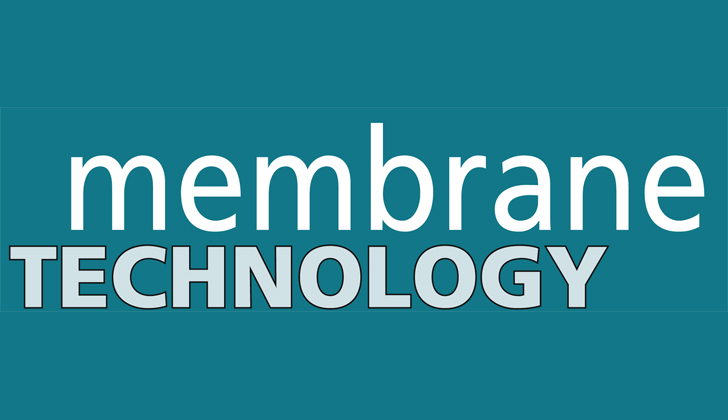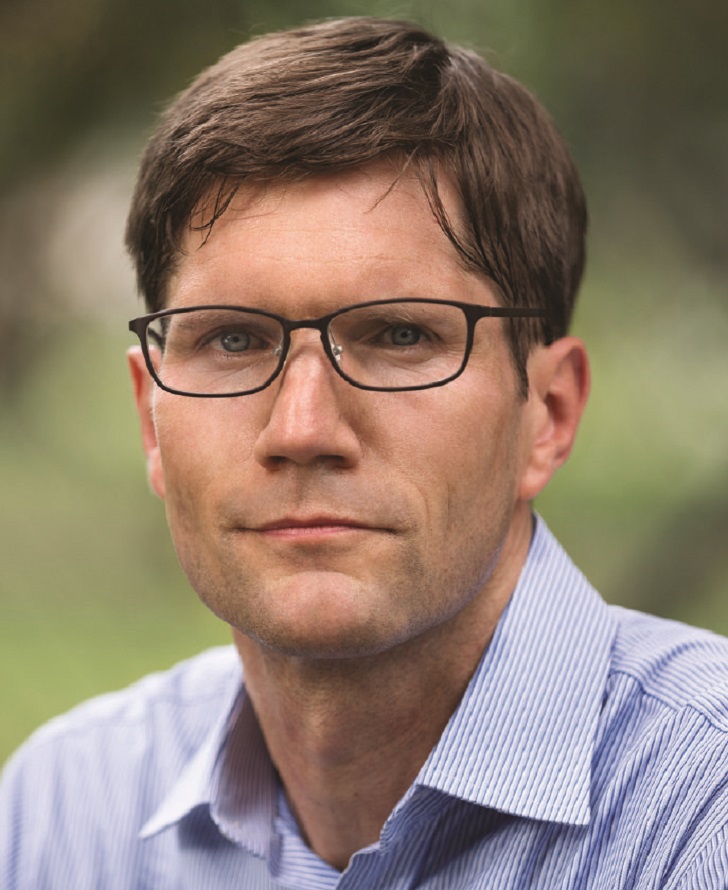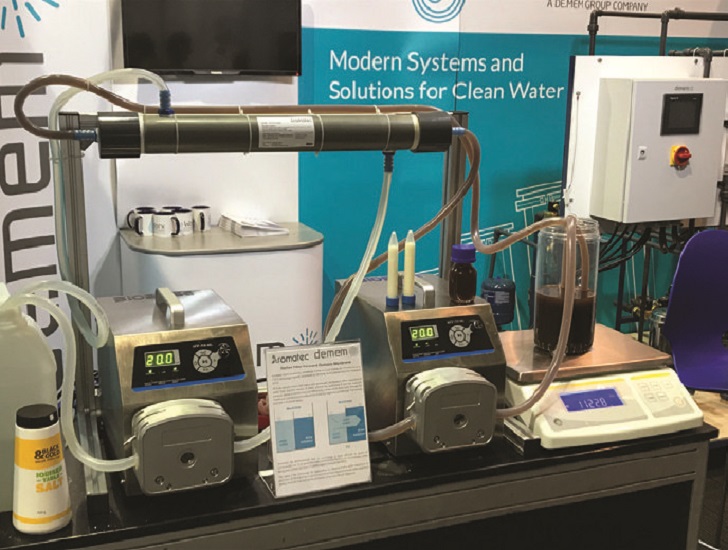


Earlier this year Singaporean–Australian water and wastewater treatment company De.mem Ltd secured the exclusive rights to a new hollow-fibre forward osmosis (FO) technology. It was originally developed by researchers at Nanyang Technological University (NTU), Singapore, for applications involving industrial wastewater treatment – in particular dewatering reject/concentrate from membrane-based water treatment plants. Andreas Kroell, CEO, De.mem, believes there is a strong need for this technology, and in this brief interview he outlines its importance and explains why the company is poised to enter this multi-million dollar segment of the wastewater treatment market.
Forward osmosis is an osmotic process that uses a semipermeable membrane to effect separation of water from dissolved solutes.
The hollow-fibre FO membrane developed by Nanyang Technological University (NTU) delivers high flux (high concentration of feed), low salt back flux (low draw solution leakage) and is easy to manufacture and scale up.
Its use substantially reduces the volumes of concentrated liquid (reject) that is generated by membrane-based water treatment plants. The disposal of such reject is an enormous cost factor for the operators of these facilities.
De.mem has demonstrated that the FO technology can reduce the volumes of reject by up to two thirds – providing substantial cost savings for its clients. It can be used in place of current zero liquid discharge (ZLD) processes and evaporators, which are expensive to purchase and operate, leaving De.mem well positioned to capitalise on a potentially lucrative market.
Membrane Technology: De.mem recently engaged in new initiatives involving a novel hollow-fibre FO membrane technology developed at NTU, which has been developed to be used for concentration or dewatering applications. Can you elaborate a bit further on what is behind this?
Kroell: Based on years of work, NTU’s scientists have developed a new hollow-fibre FO membrane which has been licensed to De.mem for industrial wastewater treatment applications, and a new partner company of De.mem, NTU and the inventors of the technology called Aromatec Pte Ltd – based in Singapore – for applications in the food and beverage industry.
Whilst FO itself is not that uncommon and has been in the market mainly as a flat-sheet membrane, the hollow-fibre format is relatively new. NTU can be considered a worldwide leader in this particular area of research.
Prof. Wang Rong and Prof. Anthony Fane – the scientists behind the invention – are considered to be leading experts in membrane science. They were awarded the Prince Sultan Bin Abdulaziz International Prize for Water (PSIPW) in 2017 in recognition of their work on this technology.
Membrane Technology: Please elaborate on the hollow-fibre format.
Kroell: As a flat-sheet membrane, FO membranes have had limited impact on the water treatment market over the past few years. This is because of some technical challenges. The back diffusion of salts from the draw solute through the FO membrane into the feed, or the so-called “internal concentration polarisation”, or ICP effect, limited membrane performance and ability to scale up the technology.
The particular hollow-fibre FO technology from NTU differentiates in high flux, which implies that it can achieve very high concentration factors, and low back diffusion of the draw solute into the feed. This new technology, which overcomes previous technical challenges, is easily scalable for large volume applications.
Membrane Technology: What do you intend to use this membrane for?
Kroell: Generally, the hollow-fibre FO can be used for concentration or dewatering applications. De.mem is engaged in two different initiatives, targeting different market segments.
As announced in March, the company has secured an exclusive licence for industrial wastewater related applications – in particular, the reduction of the volume of reject/concentrate from membrane-based water treatment plants, and specifically reverse osmosis (RO) water treatment facilities. This addresses a serious cost issue for the operators of such facilities.
As a physical separation technology, membranes reject contaminants and allow the passage of clean water – the reject is effectively a liquid with a high concentration of contaminants. This so-called reject or concentrate needs to be removed. Typically, it is transported off-site by trucks and taken to a centralised evaporation facility – at a very high cost of up to S$400 per ton.
De.mem’s new FO membrane technology can further concentrate and minimise the volume of the reject, resulting in substantial cost savings for its clients. The company targets the industrial wastewater treatment market in particular, which includes the mining industry that often deploys large RO facilities.
Membrane Technology: And the second initiative?
Kroell: The second initiative focuses on the food and beverage industry. In May, De.mem took a strategic stake in new start-up company Aromatec Pte Ltd, which intends to market the hollow-fibre FO membrane to customers from this particular sector.
This extends De.mem’s current scope of business, which is why in partnership with NTU, and the inventors of the technology, it decided to pursue this business offering through a new and separate entity.
Here, the FO technology competes with evaporation or other membrane-based concentration processes, which either require high temperature or mechanical pressure. Hence, these more traditional technologies have an impact on the taste and nutrient profile of the feed, which, for example, may be milk or fruit juice. The hollow-fibre FO is used in a “cold” concentration process and leaves taste, nutrients and proteins largely unharmed. This not only reduces costs for the customers, in view of the lower energy requirements, but ultimately improves the quality of their products.
Membrane Technology: Can you elaborate a bit further on the market characteristics and market size?
Kroell: Both of the applications that I have described represent very large addressable markets for De.mem.
As for the reduction of reject/concentrate from membrane-based industrial wastewater treatment: the competing technology is mainly evaporation. The market size for this was estimated to be worth around US$300 million a year in 2017, according to BlueTech Research, which publishes water technology market intelligence.
We believe this is a conservative estimate as amongst De.mem’s current customer-base alone we see many potential projects for this new technology. The market growth and strengthening of regulations for wastewater discharge in countries such as China will further drive the need to implement cost-efficient technologies such as this.
Within food and beverage production processes, concentration technologies such as evaporators or (non-FO-based) membranes are used widely nowadays. This comes back to large industrial facilities and includes segments such as fruit juice, dairy, coffee, sugar and beer production. Besides, the technology also can be used to concentrate liquids such as milk after production on a farm and “on-site” prior to transportation to another processing facility or to the customer – substantially reducing transportation costs.
As I mentioned earlier, the new FO technology offers advantages that go far beyond cost savings, but improve the quality of the end product. This makes this product offering very attractive for food and beverage manufacturers.
In sheer numbers, it has been estimated [BCC Research] that membranes within food and beverage production account for a market volume of approximately US$5.8 billion per annum, which provides some estimate on how big this market actually is for De.mem/Aromatec.
Membrane Technology: How will De.mem take this technology to the market, and what is the time frame expected?
Kroell: The new hollow-fibre FO technology has been developed by NTU to a stage where it is ready for the market and De.mem can proceed with manufacturing scale-up and commercialisation. The first commercial projects with customers from the food and beverage industry have already been closed and executed.
As for this market place, De.mem will be the manufacturing partner for Aromatec for both the systems and part of the membrane production. Hence, the initiative will contribute to De.mem’s revenues with immediate effect.
Furthermore, it provides De.mem with another proprietary technology, which has a unique position in the membrane industry worldwide. Lastly, this makes De.mem attractive as a partner for large corporations active in this space.
The additional cash requirements to pursue this initiative are limited as the technology is fully developed, and the manufacturing process comes back to existing capabilities and machines already in place at the company’s facility based in Singapore.
Edited by Simon Atkinson
This interview, which forms the technology focus of Membrane Technology, August 2018, is based on a discussion with De.mem Ltd’s CEO Andreas Kroell, together with press material issued directly by the company.


